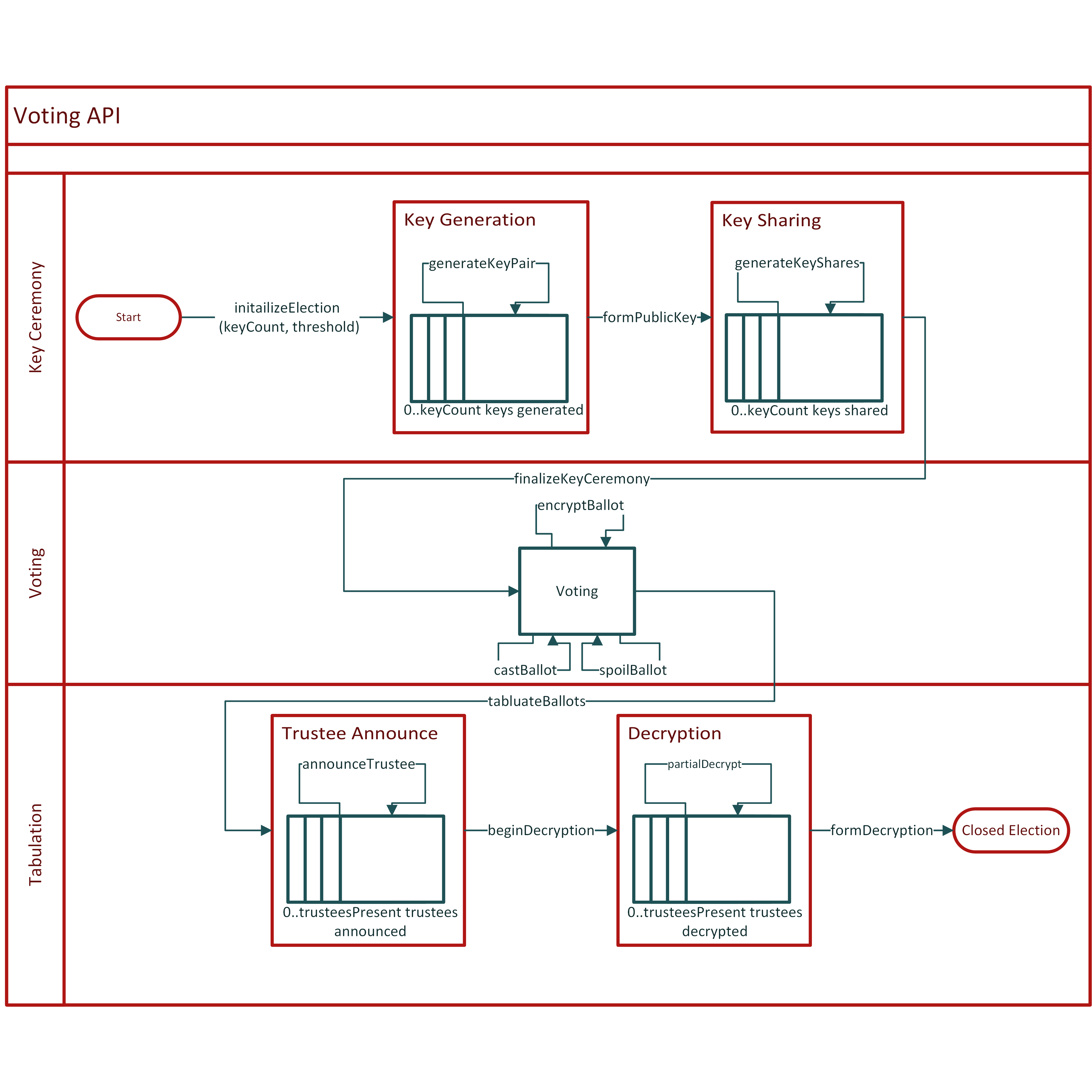ElectionGuard is an SDK designed to enable end-to-end verifiable (E2EV) elections on a wide range of existing and new voting systems.
An E2EV election is one in which any voter can obtain proof that their ballot was included as intended in the final tally, and in which any observer can check that the tally was carried out correctly. Together, these two properties offer voters a high degree of confidence that their vote was counted. Additionally, an E2EV election must not be vulnerable to vote-buying or coercion: it must be impossible for a voter to prove to someone else how they have voted.
For an introduction to one possible application of our SDK, please refer to the high-level narrative description.
The high-level description is one of many potential applications of ElectionGuard. Some of the specifics could be replaced with other systems that serve the same purpose. For instance, the ballot marking device could be replaced with an optical-scanner produces verifiable encrypted records, or a polling place could be set up with the functionality of the controller combined with the ballot box or the vote recording devices.
The careful use of cryptography is a key component of our E2EV election system. Cryptographers who are interested in a detailed specification of our protocols should first refer to our specification document. For an executable implementation of this specification, see our Cryptol implementation here.
Software developers who are working on implementations of ElectionGuard should begin by reading the API reference.
We also have a process diagram and a state machine diagram to help understand the flow of data through the polling place:
If you are interested in implementing a verifier, see the verifier schema reference. You will also find our reference verifier implementation helpful.
- The Formal/ directory contains Cryptol executable specifications of the protocol, as well as schemas representing the input of the verifier.
- The Informal/ directory contains the polling place walkthrough, images describing the system, and a description of the demo server we set up, which serves as an example of how the sdk might communicate with a frontend.
The entire repository is considered pre-release. We look forward to engaging with the community to polish our specifications as they move towards release versions.
- Matt Bauer: Initial executable specification, protocol feedback
- David Christiansen: Informal walkthrough, Readme design
- Joey Dodds: API refinement, SDK Crypography implementation
- Jason Graalum: Team leadership and management
- Kenny Foner: Demo encryption server, Rust verifier
- Luke Myers: Schema design, Demo frontend integration
- Stuart Pernsteiner: Rust verifier
- Aaron Tomb: Executable specification
- Jake Waksbaum: Schema design, Initial SDK implementation
- Daniel Wagner: SDK Cryptography Implementation
- Joe Kiniry: initial system design
- Microsoft Team: Project direction, Initial API design, Complete protocol specification, Project management, Publication

